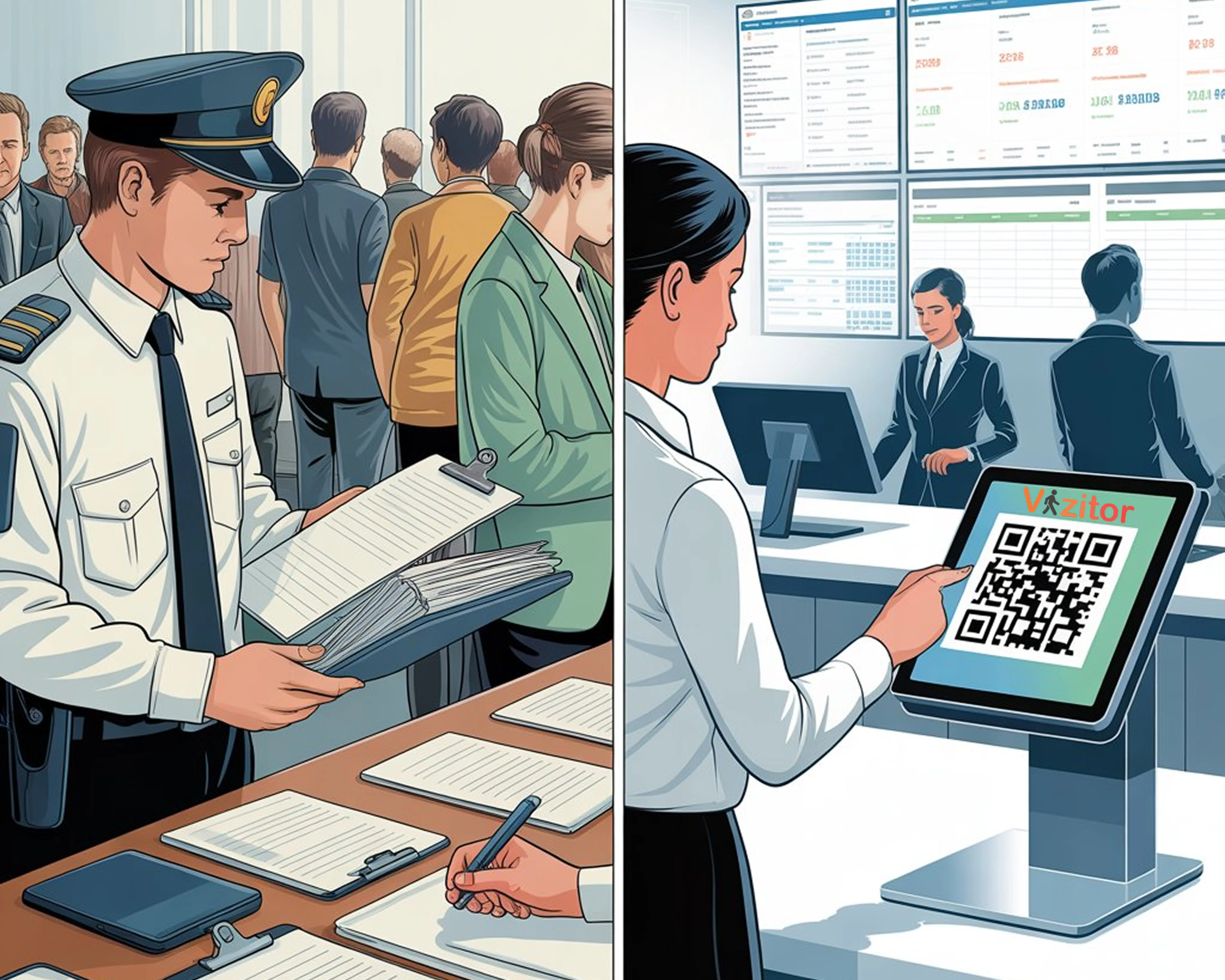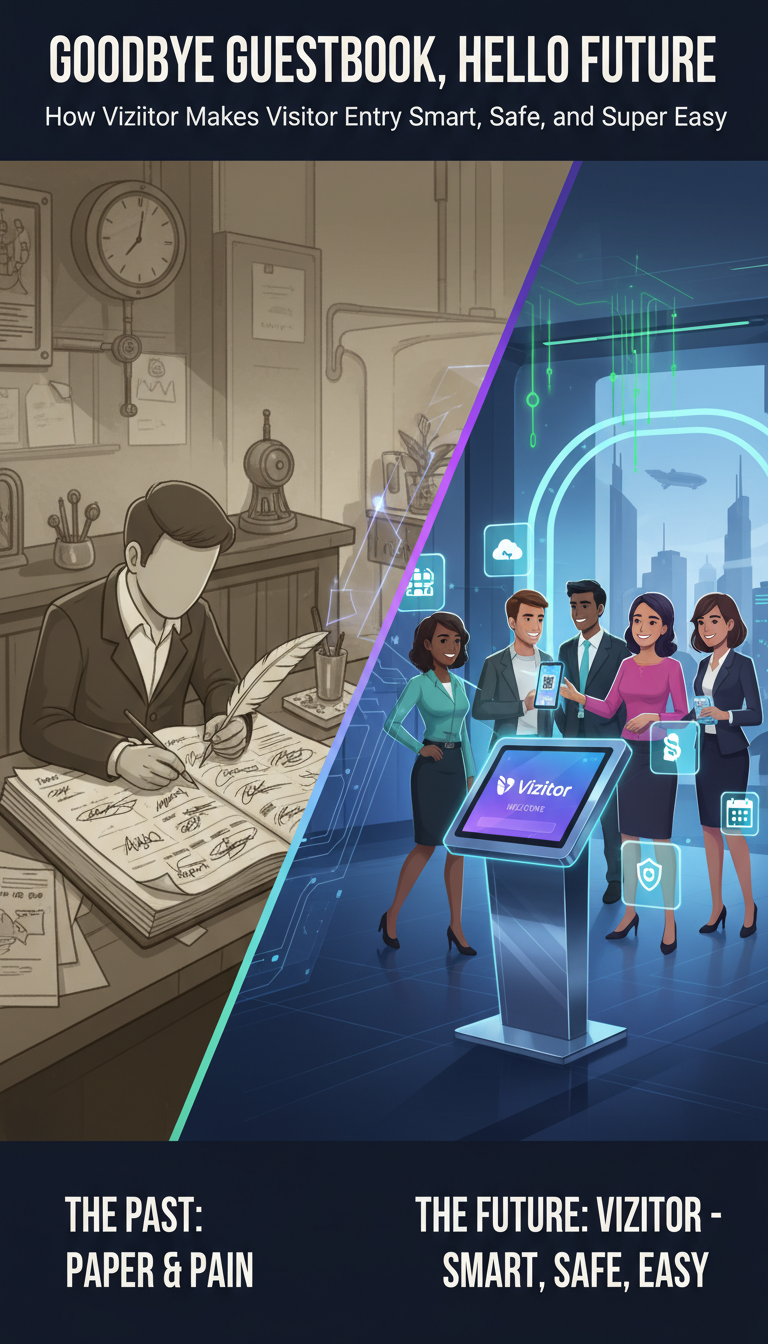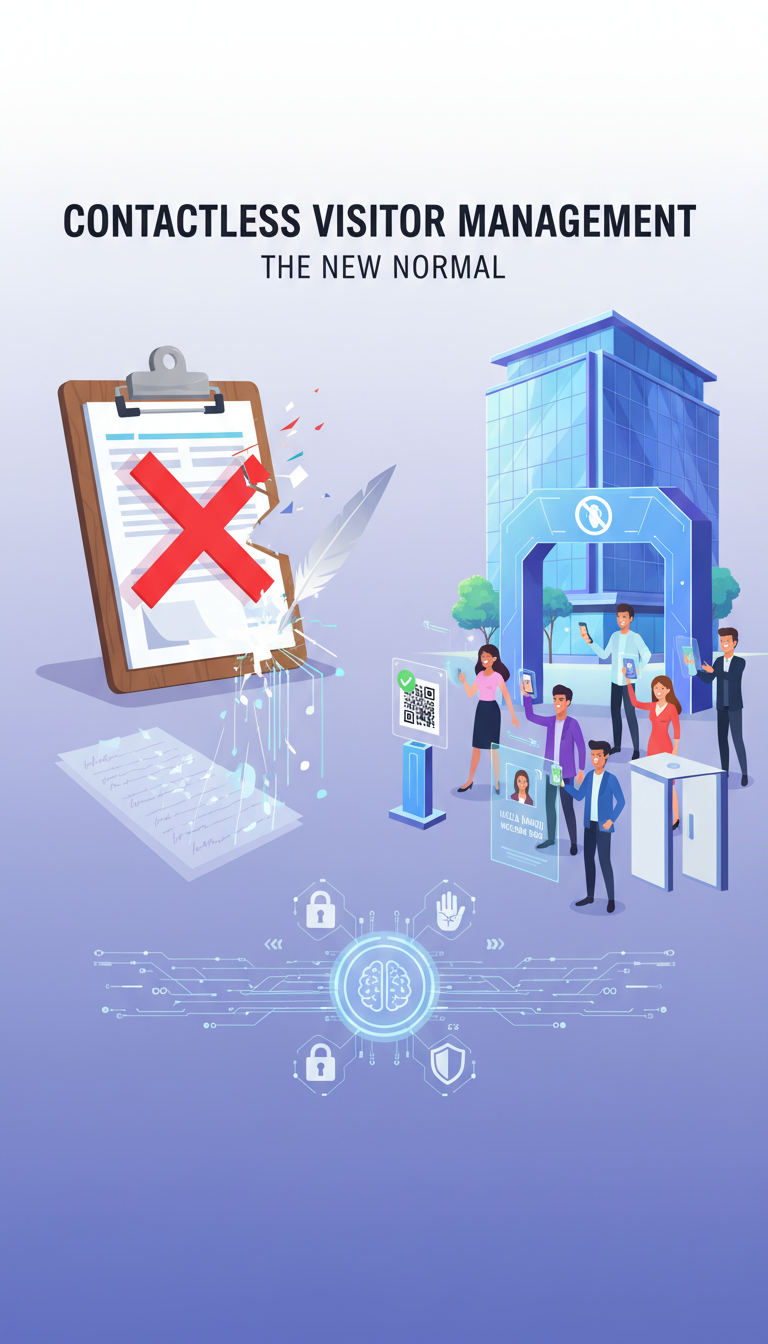Manual vs Digital Gate Pass: The Real Cost of Staying Old-School
Manual gate pass systems might look simple, but they slow teams down, create security gaps, and make record-keeping a mess. This piece breaks down what really happens when offices stick with paper-based visitor logs and how switching to a digital gate pass system changes the game. With digital check-ins, QR-based entry, and one place to track every visitor, workplaces save time and close security loopholes. A cloud-based tool like Vizitor lets businesses move away from logbooks and spreadsheets toward a safer, faster, and more organized way to manage people coming in and out every day.
Table of Content
Try Vizitor for Free!

Published on: Tue, Nov 11, 2025
Read in 6 minutes
Introduction: When “Simple” Starts Costing You More
Every office has a front gate. For years, that meant a register, a pen, and a visitor waiting for someone to write their name down.
It feels easy, but it’s not efficient or safe.
Most offices have updated everything from payroll to project tracking, yet the visitor entry process often runs the same way it did a decade ago.
Paper logs and manual passes might look cheap, but they slow people down and leave too much room for error.
This post looks at what manual gate pass systems really cost, and why more companies are moving to a digital gate pass that keeps access fast, clear, and secure.
1. What a Manual Gate Pass System Looks Like
A manual gate pass is as basic as it sounds: a visitor writes their name, someone signs a slip, and that’s the record.
The problems show up fast:
- Handwriting is hard to read.
- Details are often wrong or missing.
- Paper records get lost or tossed.
- You can’t search or analyze anything later.
- No one knows, in real time, who’s actually on-site.
It’s simple, but that simplicity hides a lot of blind spots.
2. What a Digital Gate Pass System Does Differently
A digital gate pass automates the same process only faster and with fewer mistakes.
Visitors register online, check in with a QR code, and their details go straight into a secure system.
A modern setup includes:
- Web or mobile visitor registration before arrival
- QR-based check-in at the gate or reception
- Automatic badge or pass creation
- Real-time tracking of who’s inside
- A central log for reports and audits
Instead of flipping through notebooks, you see everything on a dashboard that updates instantly.
3. Manual vs Digital: The Straight Comparison
| Feature | Manual Gate Pass | Digital Gate Pass |
|---|---|---|
| Accuracy | Depends on handwriting | Auto-filled, verified |
| Registration | Paper and pens | Online or QR code |
| Security | Easy to fake | Logged and verified |
| Tracking | Manual | Real-time |
| Compliance | Hard to prove | Audit-ready |
| Cost | Recurring admin work | One setup, scalable |
| Experience | Dated | Quick and professional |
Manual systems feel cheaper upfront. Over time, they cost more in errors, paper, and wasted hours.
4. The Hidden Cost of Staying Manual
Offices using paper systems often think they’re saving money by skipping software.
But when you add the daily friction, the picture changes.
- Front-desk staff lose hours to repetitive data entry.
- Security teams can’t cross-check past visits easily.
- Missing logs cause issues during audits.
- Paper and printing costs pile up.
A digital gate pass reduces those hidden costs by doing the work automatically.
5. How Visitor Entry Feels to the Guest
Manual Check-In:
Visitors stand in line, wait for a logbook, repeat the same details, and hope someone informs their host.
Digital Check-In:
They scan a code, confirm details, get a digital or printed badge, and walk in.
The host gets a notification immediately.
It’s faster, cleaner, and leaves a better first impression.
6. Security and Compliance: Why Digital Wins
Paper passes can’t verify who’s actually entering.
Digital systems do.
- Each pass links to an ID or invite.
- Access can expire automatically.
- Visitor logs are time-stamped and stored securely.
- Alerts flag any unusual or unauthorized entry.
When audits or security checks happen, everything’s already recorded; no scrambling for old books.
7. Managing Multiple Offices or Sites
If your business runs from more than one location, paper systems break immediately.
A cloud-based gate pass keeps all sites in sync.
Managers can:
- See who’s on-site anywhere, anytime
- Use the same registration rules across offices
- Pull reports without calling each branch
You can scale up without rebuilding from scratch.
8. Going Paperless Is Practical, Not Trendy
A paperless visitor registration system doesn’t just look modern, it cuts waste and clutter.
- No storage rooms full of registers
- No printer jams or badge piles
- Less time spent filing or searching
It’s a small change that pays off in cleaner operations and a smaller environmental footprint.
9. How Vizitor Fits In
Vizitor replaces paper logs with a secure, connected digital gate pass system built for real workplaces.
With Vizitor, you can:
- Let visitors pre-register or check in instantly
- Use QR-based or contactless entry
- Track all entries across locations from one dashboard
- Print badges or use digital passes
- Keep data encrypted and audit-ready
It’s designed to work quietly in the background so teams can focus on people, not paperwork.
Conclusion: The “Old Way” Costs More Than You Think
Manual gate passes look harmless until you add up the time, risk, and missing information.
A digital gate pass saves effort, secures access, and gives every visitor a smoother start.
If you’re still flipping through logbooks, it’s time to update the gate not just the gatekeeper.
Switch to a digital gate pass with Vizitor.
See how simple, secure, and fast access can be. Book a free demo →
FAQs
Q1. What is the main difference between a manual and digital gate pass system?
A manual gate pass uses paper registers and handwritten visitor details, while a digital gate pass system automates the entire process through online registration, QR-based check-ins, and real-time tracking.
Q2. Why are businesses moving away from manual visitor entry systems?
Manual systems create errors, long queues, and security gaps. Digital solutions simplify visitor entry, keep records accurate, and make compliance easier across multiple locations.
Q3. Is a digital gate pass system secure?
Yes, a digital visitor management system uses encryption, access permissions, and time-stamped logs to protect visitor data and prevent unauthorized entry.
Q4. Does a digital gate pass cost more than a manual system?
The initial setup may cost more, but a cloud-based gate pass saves money in the long run by cutting paper use, reducing manual labor, and improving efficiency.
Q5. Can a digital visitor management system handle multiple offices?
Absolutely, Modern visitor management software gives you a centralized dashboard to monitor all locations, standardize entry policies, and track visitors in real time.
Q6. How does a digital gate pass improve visitor experience?
Visitors can pre-register, check in with a quick QR scan, and receive digital or printed badges instantly, no waiting in line or filling out repetitive details.
Q7. Is Vizitor suitable for small businesses as well as large enterprises?
Yes, Vizitor is flexible and scalable; perfect for startups, mid-sized companies, and large organizations looking to upgrade from manual entry to automated access.
Q8. What happens to visitor data once a person leaves the building?
Visitor details are stored securely. Businesses can control how long data is retained and access it anytime for audits or reports.
Q9. How can I switch from manual gate passes to Vizitor?
Transitioning is simple schedule a demo with Vizitor, import your existing visitor data, and start managing digital check-ins within minutes.








